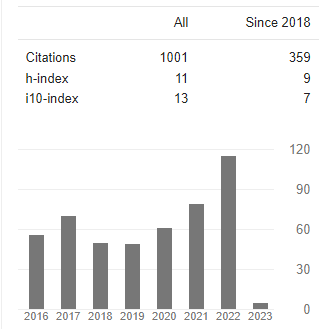COMPARATIVE EFFECT OF ISOTONIC TRAINING ON SPEED OF FEMALE PLAYERS
Abstract
The aim of this study was to examine the effect of an six week isotonic training program on speed of female players. A total of twenty female players age ranges 17 to 18 years from LNIPE volunteered to participate in this study. They were divided randomly into 1 of 2 groups: Experimental group (EG; N=10) and control group (CG; N=10). A isotonic training program was applied to the subjects 3 days a week for 6 weeks for 30-35 minutes. Testing was conducted before and after 6 weeks of training. Speed as variable was selected for the study. Speed was measured with 50 meter dash and timing was taken by electronic stopwatch. The data was analyzed by applying one way analysis of variance (ANCOVA). After the intervention, there is a significant difference was found among the treatment and the control group.
Downloads
References
Panner M. S. (1981). Course in Physical Fitness. Journal of Physical Education and Recreation, p.3.
Rechard L. Nelson (1976). Soccer for Men IOWA: WMC Brown Company Publishers, p.3. Paradisis G.P. et al (1999). Effect of Training on Sand versus Hard Surface in Speed. Medicine and Science in Sports and Exercise p.785.
Murray A. (2005). The Effects of Resisted Sled-Pulling Sprint Training on Acceleration and Maximum Speed Performance. Journal Sports Medicine Physical Fitness p. 284.
Pal, Sarika (2008). Compare the effects of training on different playing surfaces on physical, physiological and anthropometric variables of female players. Unpublished Doctoral Dissertation, L.N.U.P.E., Gwalior.
Wesley, A.C. (1977). A five-days-a-week-versus a three-days-a-week physical education programmes. Completed Research in Health Physical Education and Recreation 19,
11Gevat C. et al (2012). The effects of 8-week speed training program on the acceleration ability and maximum speed running at 11 years athletes. Coll.Antropol.36 (2012) 3:951-958.
Panny, Giay Dee (1971). A study of the effects of resistance running on speed, strength, power, muscular endurance and agility. Dissertation Abstracts International, 31, 393.















